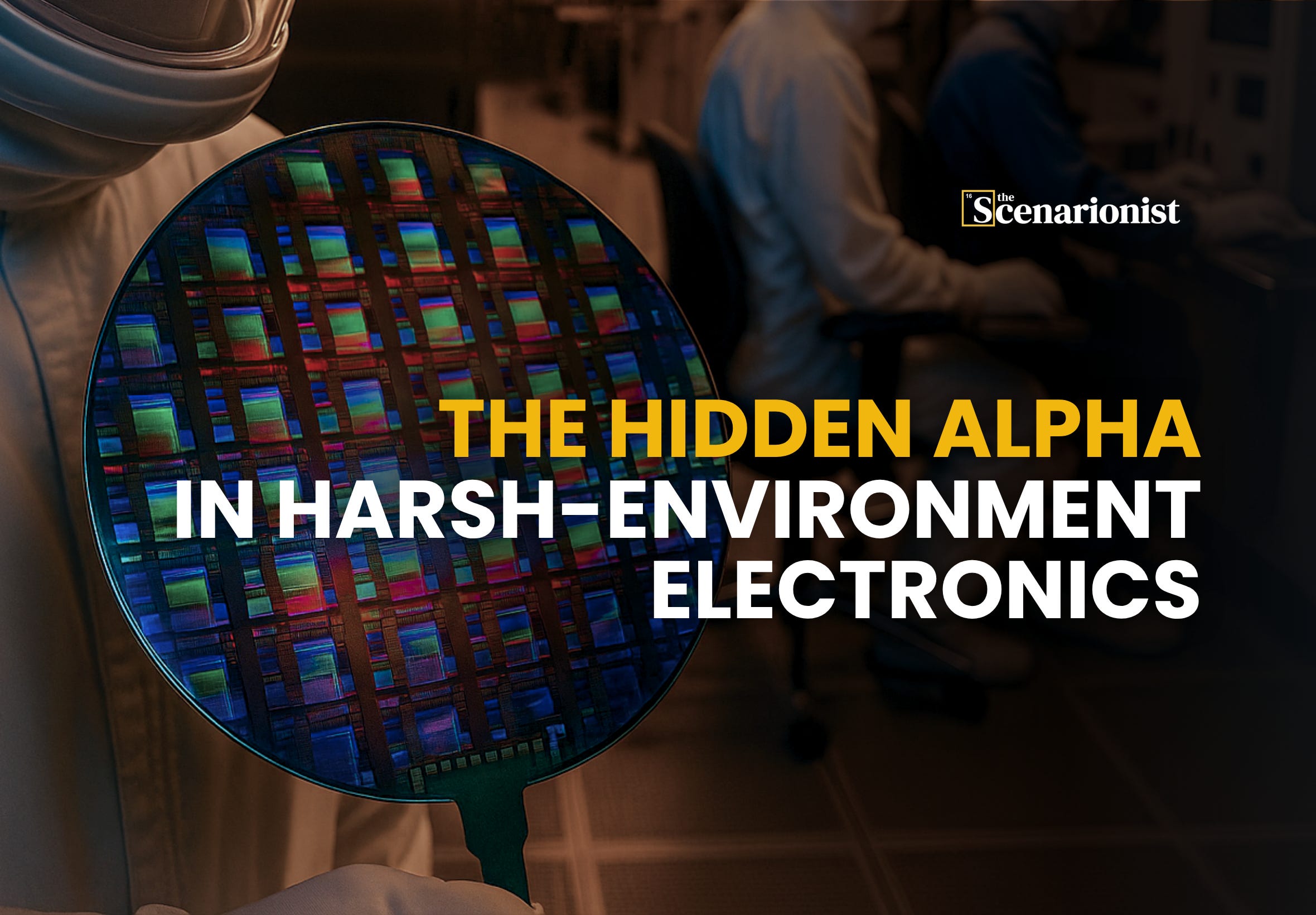The Hidden Alpha in Harsh-Environment Electronics | The Scenarionist
The overlooked “picks and shovels” of space, geothermal, and nuclear systems. The path to outlier returns is simple: survive heat, vibration, and radiation.
Electronics that survive heat, vibration, and radiation. Here, we’ll explore how extreme-resilience technologies—from heat-proof sensors to radiation-shielded computing—can unlock high-growth markets across space, defense, energy, and more.
Surviving the Extremes for Outsized Gains
Electronics usually live in comfortable settings – your climate-controlled server rooms, sleek smartphones, or under a car hood at moderate temperatures.
But what about electronics that must endure hellish heat, bone-rattling vibration, or intense radiation?
These are the “Harsh-environments” often found in space, nuclear reactors, deep underground wells, supersonic flight, and beyond.
Historically, designing hardware for such conditions was a niche, expensive endeavor left to defense contractors and oil giants. Yet today, a quiet revolution is underway. New startups are tackling these brutal conditions head-on, developing sensors, packaging techniques, and materials that laugh in the face of thermal shock, G-forces, and cosmic rays.
Why now. Reliability is being repriced. Space operators want more on-orbit autonomy; defense and energy buyers are hardening supply chains; geothermal and advanced nuclear are pushing deeper and hotter. These shifts reward components that simply don’t quit.
What changed. The stack matured. Wide-bandgap devices, ceramic/metal packaging, radiation effects testing, and qualification know-how have moved from exotic to deployable. The result: design-in persistence and sticky sockets across programs measured in years.
Where value accrues. It’s not just the chip—it’s materials, interconnects, hermeticity, and certification. Survive heat, vibration, and radiation, and you earn pricing power, long replacement tails, and service/monitoring attach that compound.
This report shines a light on these opportunities. We’ll explore how extreme-resilience technologies—from heat-proof sensors to radiation-shielded computing—can unlock high-growth markets across space, defense, energy, and more—from wide-bandgap devices to ceramic packaging proven at 200–800 °C; from neutron-tolerant sensors for advanced reactors to radiation-shielded, fault-tolerant compute platforms that bring modern processing to orbit.
Along the way, we profile emerging and established players; we’ll highlight system contexts across space, geothermal, and nuclear; the failure modes that matter—thermal cycling, single-event effects, corrosion, shock—and a few practical reference points: validated operating ranges, radiation and vibration performance, relevant approvals, and program timelines.
1. The Challenge and Opportunity of Hard Environments
Electronics don’t like extremes. Most commercial chips and circuits are specified for a comfortable range—typically up to 85 °C for consumer grade, and perhaps 125 °C for military specification.
They certainly weren’t built to shrug off being baked at 200°C, shaken with 16,000 g’s of force, or bombarded by cosmic radiation. Yet these extremes are exactly what certain industries demand.
Let’s outline the brutal conditions and why traditional electronics fail – and conversely, why solving these challenges presents a unique business opportunity.



